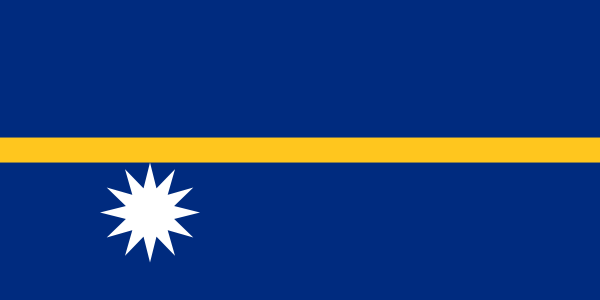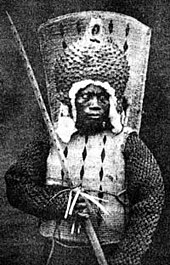Nauru

Nauru
Nauru has a long association with Australia. From being a United Nations trust territory administered by Australia to becoming one of the worlds largest sources of phosphate mined by Australian companies to an Australian off-shore detention centre for asylum seekers. Nauru is now the world’s smallest republic covering just 21 square kilometres. This film looks at Nauru in 1962 when they had the highest per-capita income in the world but when the depletion of the countries phosphate resources was already on the horizon meaning the only industry they had, and the only source of foreign investment, was coming to an end. Having become accustomed to the ways of the modern, industrialised world but with no way of supporting themselves how will they maintain their lifestyle? Will the people need to abandon their island home and what role will Australia play in their future? Made by The Commonwealth Film Unit 1962. Directed by Frank Bagnall.

Nauru (English ![]() i/nɑːˈuːruː/ nah-oo-roo), officially the Republic of Nauru and formerly known as Pleasant Island, is an island country in Micronesia in the South Pacific. Its nearest neighbour is Banaba Island in Kiribati, 300 kilometres (186 mi) to the east. Nauru is the world’s smallest republic, covering just 21 square kilometres (8.1 sq mi). With 9,378 residents, it is the second least-populated country, after Vatican City.
i/nɑːˈuːruː/ nah-oo-roo), officially the Republic of Nauru and formerly known as Pleasant Island, is an island country in Micronesia in the South Pacific. Its nearest neighbour is Banaba Island in Kiribati, 300 kilometres (186 mi) to the east. Nauru is the world’s smallest republic, covering just 21 square kilometres (8.1 sq mi). With 9,378 residents, it is the second least-populated country, after Vatican City.
Settled by Micronesian and Polynesian people, Nauru was annexed and claimed as a colony by the German Empire in the late 19th century. After World War I, Nauru became a League of Nations mandate administered by Australia, New Zealand, and the United Kingdom. During World War II, Nauru was occupied by Japanese troops, who were bypassed by the Allied advance across the Pacific. After the war ended, the country entered into trusteeship again. Nauru gained its independence in 1968.
Nauru is a phosphate rock island with rich deposits near the surface, which allow easy strip mining operations. It has some phosphate resources which, as of 2011, are not economically viable for extraction. Nauru boasted the highest per-capita income enjoyed by any sovereign state in the world during the late 1960s and early 1970s. When the phosphate reserves were exhausted, and the environment had been seriously harmed by mining, the trust that had been established to manage the island’s wealth diminished in value. To earn income, Nauru briefly became a tax haven and illegal money laundering centre. From 2001 to 2008, it accepted aid from the Australian Government in exchange for housing the Nauru detention centre.
The president of Nauru is Baron Waqa, who heads a 19-member unicameralparliament. The country is a member of the United Nations, the Commonwealth of Nations, the Asian Development Bank and the Pacific Islands Forum. Nauru also participates in the Commonwealth and Olympic Games. Recently Nauru became a member country of the International Renewable Energy Agency (IRENA).
Nauru was first inhabited by Micronesian and Polynesian people at least 3,000 years ago. There were traditionally 12 clans or tribes on Nauru, which are represented in the 12-pointed star on the country’s flag. Traditionally, Nauruans traced their descent matrilineally. Inhabitants practised aquaculture: they caught juvenile ibija fish,acclimatised them to fresh water, and raised them in the Buada Lagoon, providing a reliable source of food. The other locally grown components of their diet included coconuts and pandanus fruit. The name “Nauru” may derive from the Nauruan wordAnáoero, which means “I go to the beach.”
The British sea captain John Fearn, a whale hunter, became the first Westerner to visit Nauru in 1798, naming it “Pleasant Island”. From around 1830, Nauruans had contact with Europeans from whaling ships and traders who replenished their supplies (particularly fresh water) at Nauru. Around this time, deserters from European ships began to live on the island. The islanders traded food for alcoholic palm wine and firearms. The firearms were used during the 10-year Nauruan Tribal War that began in 1878.
Nauru was annexed by Germany in 1888 and incorporated into Germany’s Marshall Island Protectorate. The arrival of the Germans ended the civil war, and kings were established as rulers of the island. The most widely known of these was King Auweyida. Christian missionaries from the Gilbert Islands arrived in 1888. The German settlers called the island Nawodo or Onawero. The Germans ruled Nauru for almost three decades. Robert Rasch, a German trader who married a Nauruan woman, was the first administrator, appointed in 1890.
Phosphate was discovered on Nauru in 1900 by the prospector Albert Fuller Ellis. The Pacific Phosphate Company began to exploit the reserves in 1906 by agreement with Germany, exporting its first shipment in 1907. In 1914, following the outbreak ofWorld War I, Nauru was captured by Australian troops. Australia, New Zealand and the United Kingdom signed the Nauru Island Agreement in 1919, creating a board known as the British Phosphate Commission (BPC) that took over the rights to phosphate mining.
The island experienced an influenza epidemic in 1920, with a mortality rate of 18 per cent among native Nauruans. In 1923, theLeague of Nations gave Australia a trustee mandate over Nauru, with the United Kingdom and New Zealand as co-trustees. On 6 and 7 December 1940, the German auxiliary cruisers Komet and Orion sank five supply ships in the vicinity of Nauru. Komet then shelled Nauru’s phosphate mining areas, oil storage depots, and the shiploading cantilever.
U.S. Army Air Force bombing the Japanese airstrip on Nauru
Japanese troops occupied Nauru on 25 August 1942. The Japanese built an airfield which was bombed for the first time on 25 March 1943, preventing food supplies from being flown to Nauru. The Japanese deported 1,200 Nauruans to work as labourers in theChuuk islands. Nauru, which had been bypassed and left to “wither on the vine” by American forces, was finally liberated on 13 September 1945, when commanderHisayaki Soeda surrendered the island to the Australian Army and the Royal Australian Navy.[22] This surrender was accepted by Brigadier J. R. Stevenson, who represented Lieutenant General Vernon Sturdee, the commander of the First Australian Army, on board the warship HMAS Diamantina. Arrangements were made to repatriate from Chuuk the 737 Nauruans who survived Japanese captivity there. They were returned to Nauru by the BPC ship Trienza in January 1946. In 1947, a trusteeship was established by the United Nations, with Australia, New Zealand, and the United Kingdom as trustees.
Nauru became self-governing in January 1966, and following a two-year constitutional convention it became independent in 1968 under founding president Hammer DeRoburt. In 1967, the people of Nauru purchased the assets of the British Phosphate Commissioners, and in June 1970 control passed to the locally owned Nauru Phosphate Corporation. Income from the mines gave Nauruans one of the highest standards of living in the Pacific. In 1989, Nauru took legal action against Australia in the International Court of Justice over Australia’s administration of the island, in particular Australia’s failure to remedy the environmental damage caused by phosphate mining. Certain Phosphate Lands: Nauru v. Australia led to an out-of-court settlement to rehabilitate the mined-out areas of Nauru.



